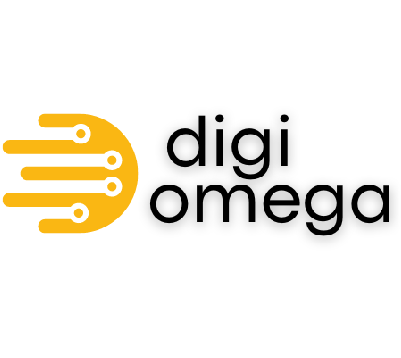Remote and hybrid work is here to stay, and as more startups embrace this flexible model, remote work marketing and connecting with a broader, global workforce has become essential. This blog explores how startups can leverage digital marketing strategies, use collaborative tools, and create targeted ads to effectively engage remote teams and reach professionals working from anywhere. Let’s dive into what’s working for startups right now!
1. Define Clear Communication Channels for Remote Marketing Teams
For distributed teams, streamlined communication is non-negotiable. Startups should establish a mix of synchronous (real-time) and asynchronous (flexible time) communication channels to keep everyone connected, regardless of time zones. Popular tools include Slack for quick updates, Zoom for video meetings, and project management tools like Asana or Trello for tracking tasks.
Additionally, startups should ensure regular touchpoints like weekly check-ins, monthly performance reviews, and quarterly goal-setting meetings to keep remote team members aligned with the company’s objectives. Utilizing asynchronous tools, like Loom for video messages and Google Docs for collaborative editing, allows team members to contribute on their own schedules, fostering a more inclusive and productive environment.

2. Optimize Digital Marketing for a Remote Audience
To reach and engage a remote workforce, your marketing strategies should prioritize personalization and flexibility. Here are some ways to optimize your approach:
- Geo-targeted Content: Customize your messaging for specific regions and time zones. For example, if you’re running ads on social media platforms, set them to appear during peak hours in the regions where your remote team operates. Use location-based messaging to acknowledge and celebrate the diversity within your workforce.
- Flexible Content Formats: Create content that’s accessible across devices. Many remote workers rely on mobile devices, so short-form content like Instagram Stories, LinkedIn posts, and Twitter threads can be especially engaging. This format is also ideal for sharing quick updates, fun polls, and team highlights.
- Interactive Engagement: Leverage interactive content such as quizzes, live Q&As, or even AMAs (Ask Me Anything) sessions that remote workers can join from anywhere. Interactive content can bridge the gap between remote team members and cultivate a sense of community.
3. Leverage Social Media to Connect with Distributed Teams
Social media isn’t just for customer-facing marketing; it can also be an internal tool for connecting with your remote workforce. Platforms like LinkedIn can be used to share company updates, celebrate team milestones, and showcase your startup’s culture. Here’s how to use social media effectively:
- LinkedIn and Twitter: Share behind-the-scenes content that highlights the day-to-day lives of your remote team. Consider spotlighting team members from different locations and sharing their remote workspaces or daily routines. This builds connection and gives a sense of the company’s diverse culture.
- Instagram Stories: Use this format to post quick updates, share user-generated content from team members, or host virtual events. Since Stories are temporary, they can be an excellent way to share more casual, spontaneous content that humanizes your brand.
- Slack Channels: If you use Slack for internal communications, create channels for specific interests, virtual water cooler chats, or #random-fun channels where remote employees can share memes, pet pictures, and other informal content. This helps to recreate the camaraderie that typically happens in-office.
4. Embrace Collaboration Tools for Team Marketing Efforts
Remote work relies heavily on digital collaboration tools, which are also essential for marketing teams that need to work together on campaigns and projects. Key tools that can enhance remote collaboration include:
- Miro or MURAL for Brainstorming: These virtual whiteboards enable teams to brainstorm together in real time. They’re particularly useful for remote team members who would otherwise miss out on in-person ideation sessions.
- Canva for Design Collaboration: With Canva, marketing teams can collaborate on visuals and graphic assets directly within the platform, making it easy to share feedback and updates in real time.
- HubSpot or Mailchimp for Email Marketing: These platforms are ideal for coordinating and automating email campaigns, which is especially useful when marketing across multiple time zones. Both allow team members to schedule and analyze email performance, ensuring that campaigns are tailored to reach remote workers effectively.
5. Target Ads Specifically for Remote Workers
To market specifically to remote professionals, consider targeting ads on platforms like LinkedIn, where you can specify job titles, industries, and other parameters that align with remote work. Focus on messaging that resonates with the remote experience, such as:
- Highlighting Flexibility: Promote content that speaks to remote workers’ desire for flexibility, such as webinars on work-life balance or blog posts on remote productivity tips.
- Leveraging Remote Work Influencers: Partner with influencers who focus on remote work. This type of collaboration can extend your brand’s reach and credibility among remote professionals who follow influencers for advice, inspiration, and practical tips.
6. Foster a Remote-First Company Culture
One of the most significant ways to engage remote teams is by nurturing a remote-first culture. Create opportunities for remote employees to build relationships and participate in company culture through:
- Virtual Team-Building Activities: Host virtual events like trivia nights, cooking classes, or escape rooms. These activities help build camaraderie and reinforce a sense of belonging.
- Recognition and Rewards: Regularly acknowledge remote team members’ achievements, both publicly in team meetings and privately through direct messages or emails. Implement an employee recognition program that can be managed remotely, allowing team members to recognize each other for contributions and support.
- Internal Newsletters and Virtual Town Halls: Use monthly or bi-weekly newsletters to share updates, highlight team achievements, and communicate important company news. Virtual town halls can be an excellent forum for leadership to engage with the entire company, answer questions, and provide a vision for the future.
7. Focus on Work-Life Balance and Mental Health Initiatives
Remote work often blurs the lines between personal and professional life, making work-life balance and mental health crucial focus areas. Support your distributed workforce by:
- Encouraging Boundaries: Remind employees to set work hours and unplug after hours. Consider offering flexible working hours or stipends for remote wellness apps like Headspace or Calm.
- Providing Mental Health Resources: Many startups now offer access to teletherapy or virtual counseling sessions as part of their employee benefits. Make these resources accessible and regularly remind team members about the available support.
By prioritizing these marketing tactics and tools, startups can effectively engage their distributed workforce, nurture a strong remote culture, and extend their reach to a global talent pool. Building connections, fostering flexibility, and supporting work-life balance are key to thriving in the remote work era, so lean into these trends and watch your remote team flourish!
At digiOmega, we understand the unique challenges and opportunities that come with marketing to a remote workforce. We’re here to help you develop strategies that foster collaboration, enhance team engagement, and drive meaningful connections within your organization. Let’s work together to build a remote-first marketing approach that aligns with your startup’s goals and positions your brand for success in this evolving, borderless workplace.



